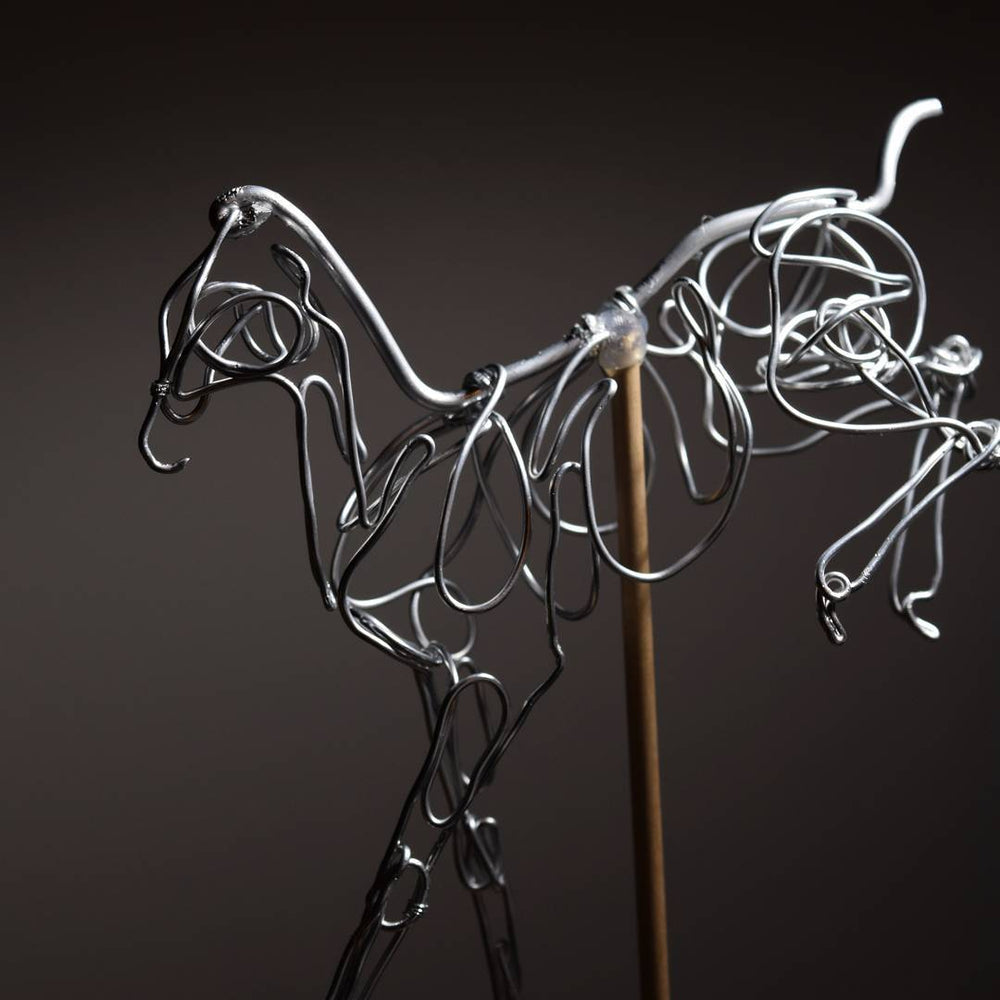
Disclosure: This post contains some affiliate links. I may earn a small commission at no extra cost to you, supporting my blog and content creation. Thank you!
---
As a relatively new artistic medium, air dry clay requires a strong armature to create successful sculptures. The tips provided in this article will work best with Creative Paperclay, but other high-quality air dry clays, like La Doll, will follow the same principles.

What's an armature?
An armature is the internal support system of a sculpture, typically constructed from various materials, with wire being one of the most common choices. In traditional forms of sculpture, the armature often serves as a temporary support. For example, in bronze work, the model is built on an armature before a mold is made, and in ceramics, sculptures can be built around an armature, which must be removed before firing.
BY this same standard, polymer clay artists also need to be cautious about the materials they choose for their support systems, as the clay needs to be baked. This is why many polymer clay artists use aluminum foil to bulk out their work - it is unaffected by the oven.
Why do I need one?
Air dry clay sculptures don't require intense heat to harden (or actually any heat at all), so the armature remains intact, providing ongoing strength and support. This allows you to use a variety of materials when constructing the armature. An integrated armature provides extra strength to the sculpture for its entire life.

Not a typical armature - some of the wire will be left exposed
Make it Strong, Not Pretty
When constructing an armature for air dry clay sculpture, strength and stability are the two most critical factors to consider. If the armature is not robust and stable, it will not provide adequate support for your sculpture and could cause damage to delicate areas.
My early experiment with wire mesh as an armature (the first image in this post) did not provide enough stability, causing the sculpture to crack in several places and become unstable when moved. Luckily, this piece was just a learning experience and not intended for display.
The importance of a solid armature cannot be overstated.
Small wire armatures for my horse sculptures
Materials for Armatures
For smaller sculptures, wire alone can often provide enough support. Creative Paperclay is relatively flexible, working well with wire as a support structure.
Common materials for air dry clay armatures include:
- Wire – almost always used, read more about wire for armatures
- Wooden dowels – lightweight and strong, perfect for legs
- Extruded polystyrene – stronger and more resilient than regular Styrofoam
- Super glue – self explanatory
- Hot glue – best for quick attachments that are then reinforced with another material
- Electrical tape – excellent for securing articulated dowel legs due to its flexibility, might not stick to all materials well though
- Epoxy clay – the best permanent holder of anything (I use brands such as Apoxie Sculpt or Milliput)
- Aluminium foil - for bulking out the figure once the armature is complete

An example of an armature made of wire, dowels, foil and mounted on polystyrene
Final Thoughts
When creating an armature, ensure you use materials that will not rust or decompose inside the sculpture, as this would compromise its structure. For larger sculptures, the armature should be lightweight and rigid, providing a solid base for the clay to prevent cracking, and strong enough to support the weight of the wet clay.
These initial considerations are crucial when creating an armature for a sculpture. In my next post, I'll discuss how anatomical considerations impact the construction of the armature in air dry clay sculpture.
What's Next?
Read the second part of this journey about Equine Anatomy
Learn more about the wire used for air dry clay armatures

